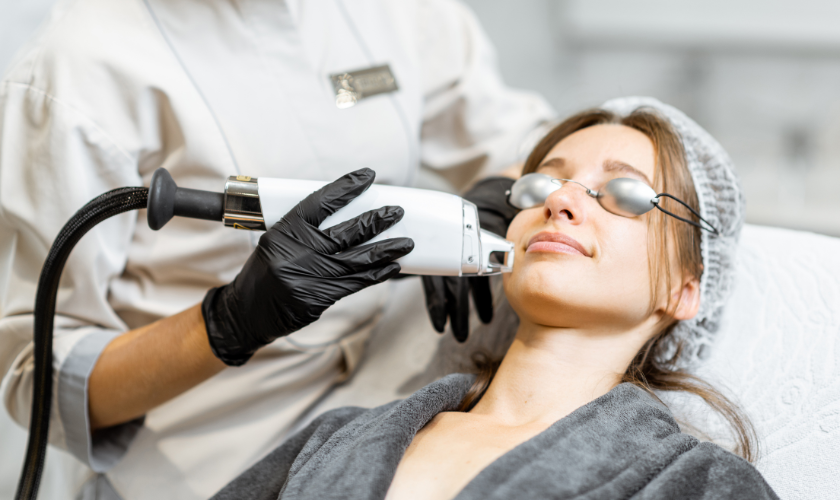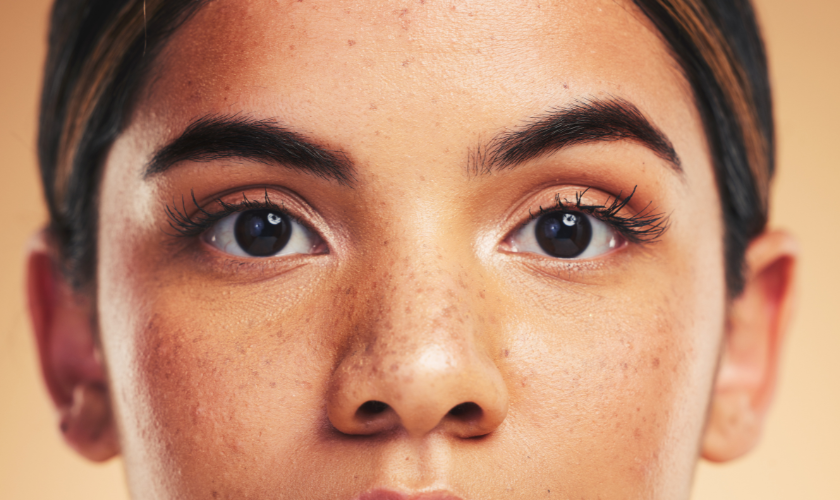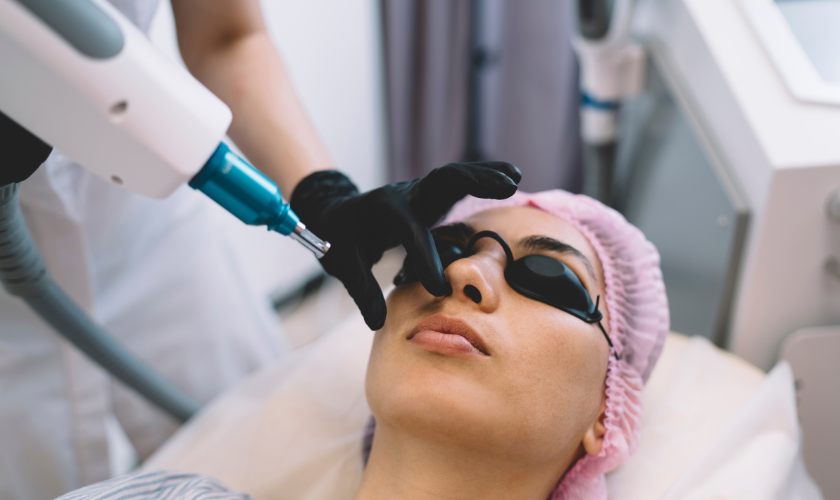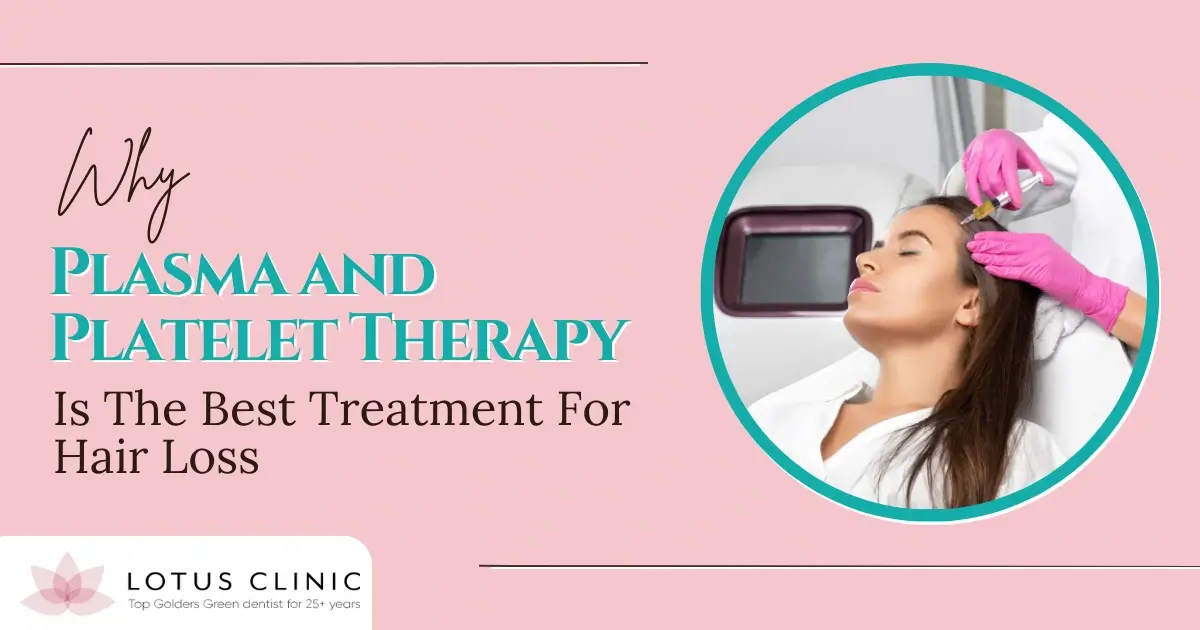943 Finchley Rd, London NW11 7PE
Beyond Bleaching: Exploring Laser Treatments for Stubborn Pigmentation

In the quest for flawless skin, dealing with stubborn pigmentation can often be a challenging hurdle. While traditional remedies like bleaching creams and topical treatments offer some relief, they may fall short in tackling deep-seated pigmentation issues. However, with advancements in dermatological technology, laser treatments have emerged as a powerful solution for addressing stubborn pigmentation problems effectively.
Laser treatments for pigmentation utilise the focused energy of laser beams to target and break down excess melanin deposits in the skin. Unlike topical treatments that may only address surface-level pigmentation, lasers penetrate deeper into the skin layers, offering more precise and long-lasting results. From sunspots and melasma to post-inflammatory hyperpigmentation, laser treatments offer a promising avenue for achieving clearer, more even-toned skin.
Before delving into the various types of laser treatments available, it’s essential to understand the underlying causes and types of pigmentation issues. By gaining insight into the root causes and specific characteristics of pigmentation problems, individuals can make informed decisions about the most suitable treatment approach for their unique skin concerns.
Causes and Types of Pigmentation

Understanding the causes and types of pigmentation issues is crucial for effective treatment and management. Here’s a breakdown:
- Sun Exposure: Prolonged exposure to the sun’s harmful UV rays is a primary cause of pigmentation. UV radiation triggers the production of melanin, leading to dark spots and uneven skin tone.
- Hormonal Changes: Fluctuations in hormone levels, particularly during pregnancy or due to hormonal medications, can result in conditions like melasma. Also known as “pregnancy mask,” melasma causes patches of dark pigmentation on the face.
- Ageing: As we age, the skin’s ability to regenerate and repair itself diminishes. This can lead to the accumulation of pigmentation over time, resulting in age spots or liver spots.
Different types of pigmentation issues include:
- Melasma: Characterised by brown or grey-brown patches on the face, melasma often occurs due to hormonal changes and sun exposure.
- Sunspots: Also known as solar lentigines or liver spots, sunspots are flat, brown spots that develop on areas of the skin exposed to the sun.
- Post-inflammatory Hyperpigmentation: This type of pigmentation occurs as a result of skin trauma or inflammation, such as acne scars or insect bites, leading to dark patches or spots.
Laser Treatment Options for Different Pigmentation Issues

Laser treatments offer a targeted approach to address various types of pigmentation problems, providing effective results with minimal downtime. Here’s an overview of specific laser treatments recommended for common pigmentation issues and their treatment protocols:
Melasma Treatment with Q-Switched Nd Laser
The Q-switched Nd laser is a popular choice for treating melasma, a condition characterised by dark patches on the face. This laser works by targeting melanin deposits in the skin, breaking them down without causing damage to surrounding tissues. Treatment sessions are typically spaced several weeks apart to allow the skin to heal between sessions. Patients may experience mild discomfort during treatment, with minimal downtime and noticeable improvement after each session.
Sunspot Removal with Intense Pulsed Light (IPL) Therapy
Intense Pulsed Light (IPL) therapy is highly effective for removing sunspots and other pigmentation issues caused by sun damage. IPL emits broad-spectrum light pulses that target melanin in the skin, causing the pigment to break down and fade over time. Treatment protocols vary depending on the severity of the pigmentation, with most patients requiring multiple sessions for optimal results. IPL therapy is non-invasive and typically well-tolerated, with minimal side effects such as temporary redness or swelling.
Fractional Laser Resurfacing for Post-inflammatory Hyperpigmentation
Fractional laser resurfacing is an advanced treatment option for addressing post-inflammatory hyperpigmentation, often associated with acne scars or other skin injuries. This laser treatment works by creating micro-injuries in the skin, stimulating collagen production and promoting cellular turnover. Over time, the damaged skin cells are replaced with new, healthier tissue, resulting in a smoother, more even complexion. Fractional laser resurfacing may require several sessions spaced weeks apart, with minimal downtime and gradual improvement in pigmentation issues.
Combination Therapies for Comprehensive Results
In some cases, dermatologists may recommend combination therapies to address pigmentation issues comprehensively. This approach may involve combining laser treatments with topical medications or chemical peels to enhance results and target pigmentation from multiple angles. By customising treatment plans based on individual needs and concerns, dermatologists can achieve optimal outcomes for patients dealing with stubborn pigmentation problems.
How Laser Treatments Work?
Laser treatments for pigmentation work by harnessing the power of concentrated light energy to target and break down excess pigment cells in the skin. The specific wavelength of light emitted by the laser is absorbed by the melanin in the pigmentation, causing the pigment cells to heat up and fragment. As the pigment cells are destroyed, they are gradually eliminated by the body’s natural processes, resulting in a reduction in the appearance of pigmentation.
During the treatment session, the dermatologist or skincare professional will carefully select the appropriate laser device and settings based on the type and severity of the pigmentation. The laser is then applied to the affected areas of the skin, delivering precise bursts of energy to target the pigment cells.
While the laser treatment may cause some discomfort or a mild tingling sensation, most patients tolerate the procedure well, and any discomfort is typically brief. Over time, as the treated areas heal, patients can expect to see a noticeable improvement in the appearance of their pigmentation, with results becoming more evident with each subsequent treatment session.
Benefits and Risks of Laser Treatments
Laser treatments offer several advantages for addressing pigmentation issues, making them a popular choice among individuals seeking clearer, more even-toned skin. Here are some key benefits:
- Precision: Laser technology allows for precise targeting of pigment cells, minimising damage to surrounding tissues and ensuring optimal results.
- Minimal Downtime: Unlike invasive procedures, laser treatments typically involve minimal downtime, allowing patients to resume their daily activities shortly after treatment.
- Versatility: Laser treatments can be tailored to address a wide range of pigmentation issues, from sunspots and melasma to post-inflammatory hyperpigmentation, providing comprehensive solutions for various skin concerns.
- Long-lasting Results: With proper care and maintenance, the results of laser treatments can be long-lasting, helping individuals achieve clearer, more radiant skin for an extended period.
While laser treatments offer numerous benefits, it’s essential to be aware of potential risks and side effects associated with the procedure. Although rare, some individuals may experience:
- Post-inflammatory Hyperpigmentation: In some cases, laser treatments may trigger temporary darkening of the skin in the treated areas. However, this side effect typically resolves on its own over time.
- Scarring: While uncommon, there is a small risk of scarring associated with laser treatments, particularly if a skilled and experienced practitioner does not perform the procedure. However, proper technique and careful patient selection can minimise this risk significantly.
Overall, the benefits of laser treatments for pigmentation far outweigh the potential risks, especially when performed by a qualified dermatologist or skincare professional. By discussing your concerns and goals with a trusted aesthetics clinic, you can make an informed decision about whether laser treatment is the right option for you and enjoy the benefits of clearer, more radiant skin with minimal risks.
Preparing for and Recovering from Laser Treatments
Before undergoing laser treatment for pigmentation, it’s essential to follow pre-treatment guidelines to ensure optimal results and minimise the risk of complications. Here are some important steps to take before your laser treatment:
- Sun Protection: Avoid direct sun exposure and use broad-spectrum sunscreen with SPF 30 or higher daily to protect your skin from UV damage, which can interfere with the effectiveness of the laser treatment.
- Skincare Routines: Follow your dermatologist’s recommendations for skincare leading up to your treatment, which may include avoiding harsh exfoliants or certain topical medications that could increase skin sensitivity.
- Hydration: Keep your skin well-hydrated by drinking plenty of water and using moisturisers to maintain skin health and resilience.
Following your laser treatment, proper post-treatment care is crucial to promote healing and achieve optimal results. Here are some essential post-treatment care instructions:
- Minimising Discomfort: Use prescribed or over-the-counter pain relievers as directed to manage any discomfort or swelling following your laser treatment.
- Avoiding Irritants: Avoid exposing treated areas to irritants such as harsh chemicals or abrasive skincare products that could interfere with the healing process.
- Optimising Results: Follow your dermatologist’s instructions for skincare post-treatment, which may include gentle cleansing, moisturising, and applying soothing topical treatments to promote healing and minimise the risk of complications.
By following these pre-treatment and post-treatment guidelines, you can ensure a smooth and successful laser treatment experience with minimal discomfort and optimal results.
Achieve Clearer And Radiant Skin with Laser Treatments
Laser treatments offer a highly effective solution for addressing stubborn pigmentation issues and achieving clearer, more radiant skin. By targeting pigment cells with precision, these advanced treatments can fade sunspots, melasma, and other types of pigmentation, restoring a more even complexion. While laser treatments come with minimal downtime and long-lasting results, it’s essential to choose a reputable laser treatment provider like Lotus Dental And Aesthetics Clinic.
With years of experience and expertise in beauty treatments and skincare, we offer personalised treatment plans tailored to your unique needs. If you’re ready to say goodbye to pigmentation concerns and hello to smoother, healthier skin, schedule a consultation with us today and take the first step towards your skincare goals.







